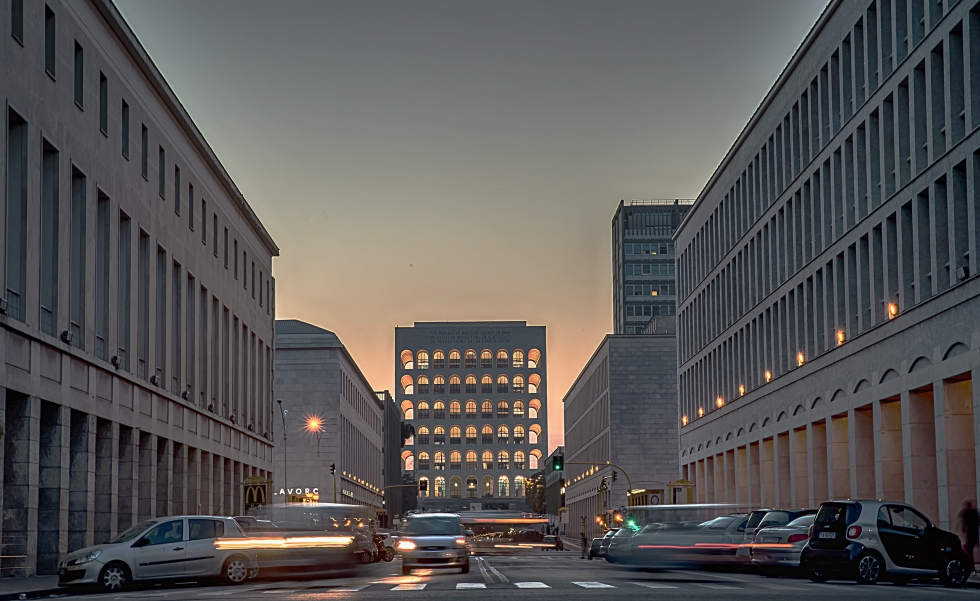Wide and straight roads which intersect in a chessboard, big and imposing buildings – built almost only of marble and travertine – give the entire place a majestic look. As a matter of fact the symbol building of the EUR is the Palazzo della Civiltà Italiana, also known as “Square Colosseum”, with reference to the greatness of the Roman Imperial Age. After all the “chessboard arrangement” was typical of Roman cities: streets that crossed perpendicularly improving the circulation by making it faster and safer. This urban characteristic was strictly linked to the “castrum”: the Roman encampment. It’s strange to point out that the less “Roman” city – from an urban point of view – was indeed Rome!
The EUR (Roman Universal Exhibition) was conceived at the beginning of the ’30s to be the headquarters of the 1942s World fair, which never took place because of the Second World War. The works started on 26th of April 1937 when Mussolini planted a pine in the middle of the future district, but were then stopped during the war and resumed only afterwards. The district was finished between 1950 and the 1960s Olympic Games following the original urban project. . The architectural style was obviously slightly modified from the fascist one – maybe a little bit too emphatic - but the role of the district was still the same. In fact, the EUR played a main role in the development of Rome towards the sea, that’s why, in the last decades, its majestic buildings housed many international Public Institutions (such as NATO) and remarkable private companies. The district is also renowned for the huge amount of well-organized museums: like the Museum of Early Middle Ages, the Museum of Roman Civilization, the Pigorini National Museum of Prehistory and Ethnography, and the National Museum of Working-Class Arts and Traditions. The Museum of Early Middle Ages is not only important for its many artistic and historical works, but also because it aims to encourage the study of an era which was fundamental for the birth of the modern world. Among the most famous buildings of the district, apart from the Square Colosseum, there’s the Palazzo dei Congressi. It’s one of the most important buildings of the Universal Exhibition of 1942; it was almost done before the war but only completed at the beginning of 1950s. Seat of conferences and exhibitions, it catches the eye for its mole and magnificence. Noteworthy is the EUR obelisk, dedicated to the Nobel prize for Physics in 1909, Guglielmo Marconi, inventor of the radio telegraph. The obelisk – erected in 1959 - is covered in marble slates, it’s 45 metres high and lies precisely in the geographical middle of the district. The righteous tribute to a giant of science.
Giuseppe Rosselli

